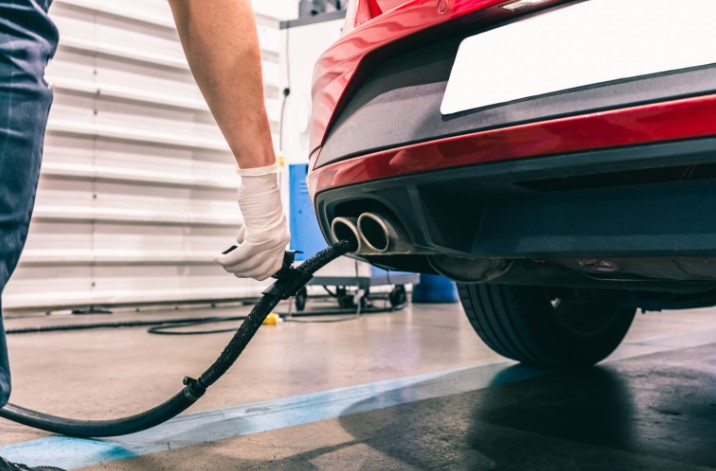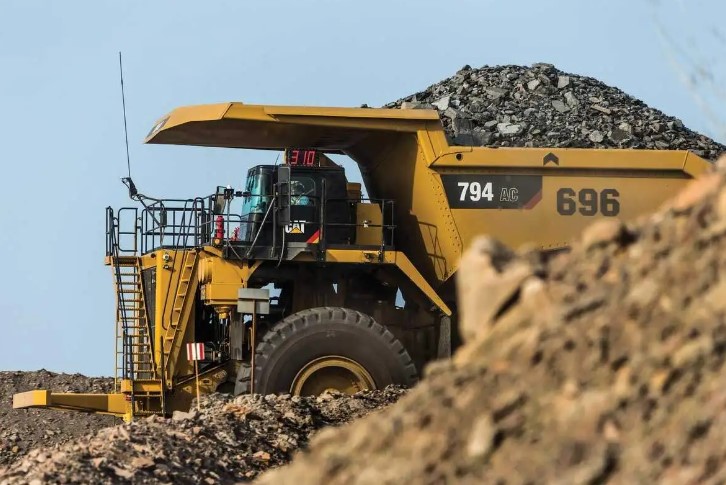800-volt system done, electric is the future
Lexus and Toyota might not be asleep at the EV wheel after all. The automaker, known for biding its time and taking a cautious long-game approach on anything that it sees going big, appears to be applying the same mindset here.
In an interview with Lexus chief engineer Takashi Watanabe at a prototype drive for the 2023 Lexus RZ 450e in Barcelona, Spain, Green Car Reports learned about the automaker’s thinking on electrical architectures, charging rates, and the electric future.
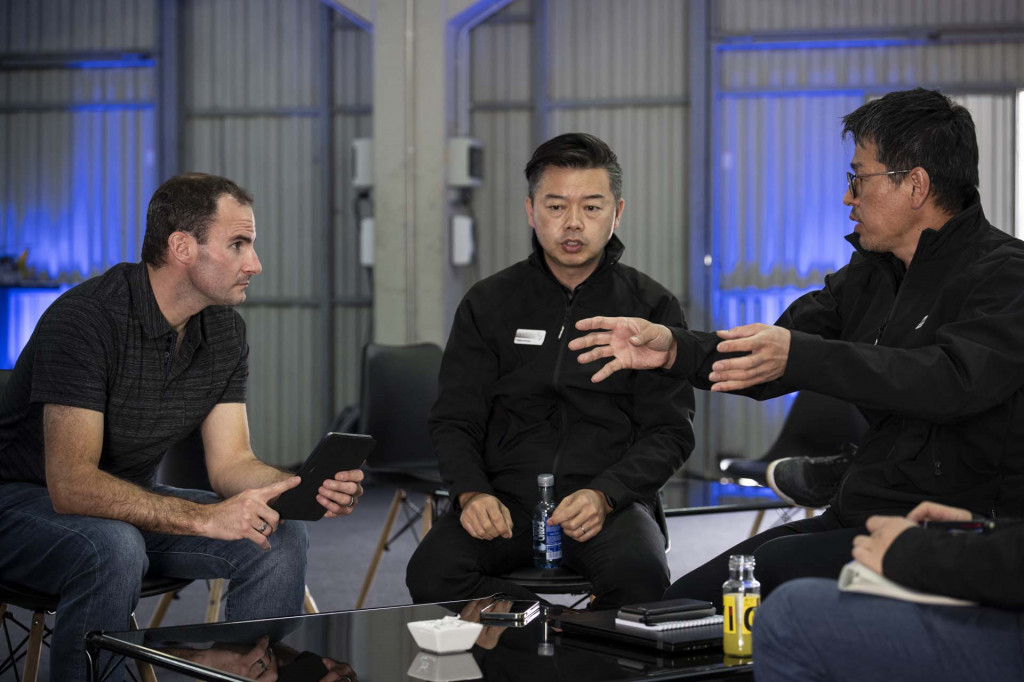
Green Car Reports interviewing Lexus chief engineer Takashi Watanabe
The future is electric.
Toyota may have bet on the hydrogen horse, but it knows which pony won the race for passenger vehicles. Even if it doesn’t often want to admit it.
Watanabe said that for the automaker to realistically hit carbon neutrality, battery electric is the proper solution.
But it goes beyond just electric cars. We need to move to renewable energy and the best source is electricity rather than fossil fuels, according to Watanabe. The key will be how efficiently we can manipulate and use electricity. And the challenge is “how small a battery can we get away with to achieve these goals,” Watanabe said.
Battery electric cars are not a midterm solution, according to Watanabe. This is the next step in the central role in getting to the future and carbon neutral goals.
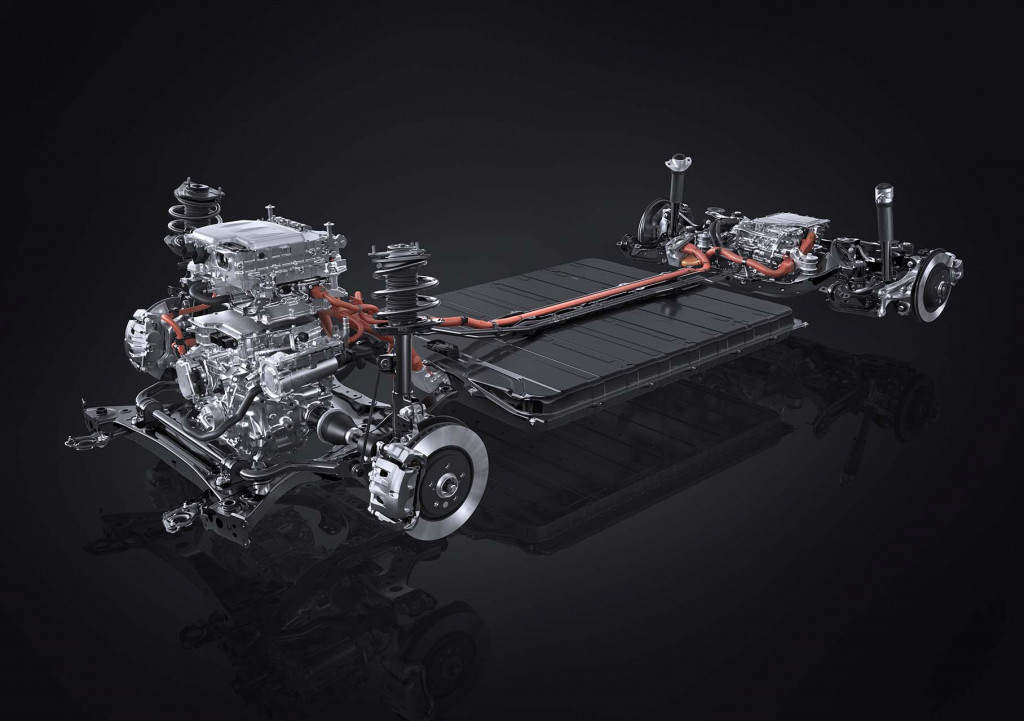
2023 Lexus RZ 450e
Going to 800 volts
When asked if Toyota and Lexus have finished work on an 800-volt electrical architecture, Wantanabe answered quickly: “Yes.”
But the first electric Lexus sold in the U.S., the 2023 RZ 450e, will not feature such an electric architecture or charge rate. The max charge rate of its 71.4-kwh battery pack will be 150 kw and it charges and runs at about 400 volts.
The reason, according to Watanabe, is the relationship between the battery capacity and charging. The executive reasons that larger battery packs warrant the faster electrical architecture and charge rates. For Toyota and Lexus it’ll be viewed upon a “case-by-case basis,” Watanabe said.
The breakover point will be about 100 kwh, according to Watanabe. That’s where charging rates will need to be faster and the electrical architecture will benefit from 800 volts.
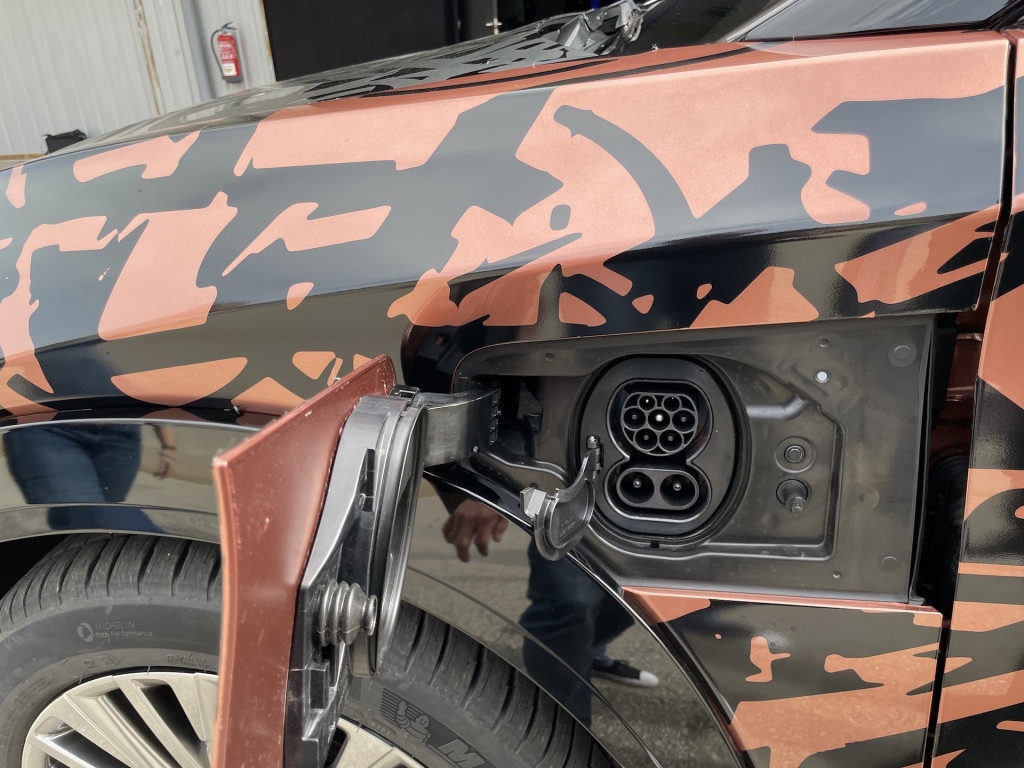
2023 Lexus RZ 450e
Fast charging rates
Watanabe notes higher charge power (above the 150 kw mark) is expensive both on the vehicle hardware side and infrastructure side of the equation.
The executive was quick to point out different regions are at different points in infrastructure development at this time. Region-specific needs will dictate a lot of what the automaker does. While the U.S. is (slowly) starting to roll out 350 kw fast-charging stations, the predominant rate is 150 kw for fast charging at this time.
“CCS is the global standard, it’s something that’s convenient, and CCS 150 (kw) looks like it’ll be the majority for the foreseeable future,” Watanabe said, referring to globalized charging rates that look beyond America and at the market as a whole.
Over-the-air updates
When asked what is possible in terms of upgrading the RZ, or other electric cars, via over-the-air updates Watanabe said, “right now we’re not trying to put any limitations or restrictions on what’s possible through OTA.”
The executive elaborated by saying for instance electric motor control, charging, supporting systems, or new value services can all be enhanced using OTA technology.
The key to this is an updateable ECU system and communication system that Lexus is working to put together. But like many other variables, Watanabe said a lot of this will be defined by the needs of each region.
Earlier Watanabe had noted that while the U.S. market views 200 miles of range as low, it’s viewed as more than plenty of range in markets like China.
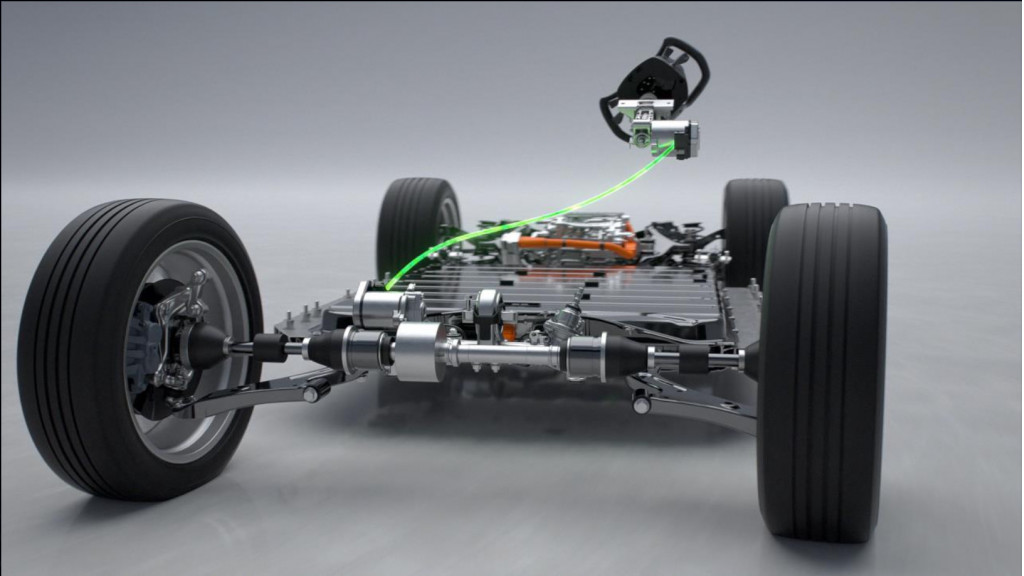
Lexus steer-by-wire system
Autonomous driving
Steer-by-wire, which is a system first being introduced with the Lexus RZ 450e (though it won’t be an option in the U.S. for the first model year) with a yoke. That system is an incremental step toward an autonomous future.
Watanabe said the idea of just sitting behind the steering wheel and the wheel moving itself, it’s “a little awkward.” The steering wheel (or yoke) could be connected or disconnected with what’s actually going on at the tires when it makes sense by steer-by-wire, but not by a traditional electric power steering system.
Values and experiences
Watanabe said a lot of what defines some automakers going forward will in part come down to experiences. A digital key via a smartphone (like some automakers including Hyundai and Tesla have started offering) is a stepping stone that can enable future services.
The executive theorized about delivery and charging services that would come to meet you, or the vehicle, and ensure the battery is pre-charged for you. This type of service would rely on the implementation of smartphone digital keys and using an app to pre-plan.
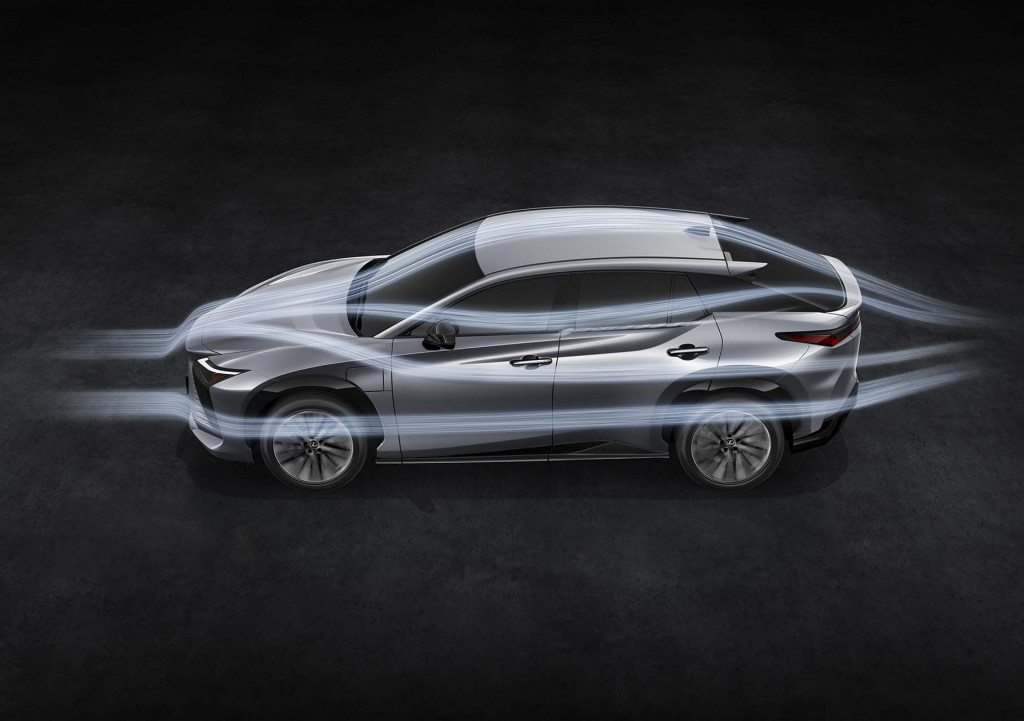
2023 Lexus RZ 450e
But what about range?
In November Cooper Ericksen, Toyota Motor North America VP for product planning and strategy, told GCR that while Toyota will make affordability and not range the center of its EV play, Lexus might not take the same path. The executive noted that 400 to 500 miles of range is the goal for luxury models. This requires the use of much larger batteries with more cells, heavier carbon footprint per vehicle, and higher sticker prices.
The RZ 450e is none of these things, and Watanabe emphasized efficiency and lowering the automaker’s carbon footprint while keeping costs in line.
We are getting mixed messages from Toyota and Lexus executives at a time where a shift is taking place and—in the U.S.—200 to 230 miles of range simply isn’t competitive with the latest crop of electric cars.
Until Lexus can provide something like the 300- to 400-mile range that some luxury rivals deliver—even more in some cases—Lexus will have to show that it can innovate in a way it always has: by making the ownership experience very, very smooth.

